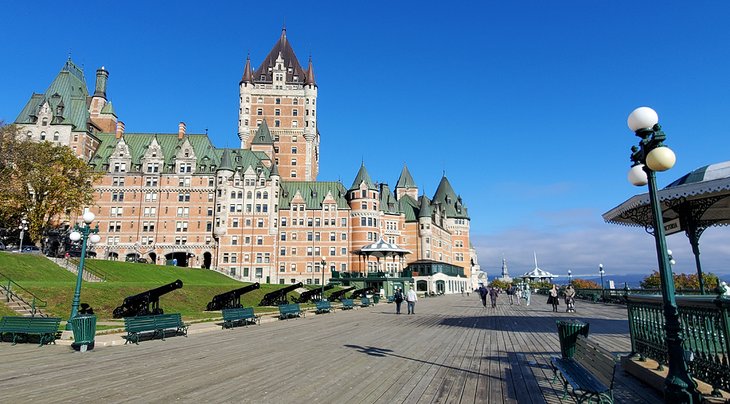Niagara FallsCanada's most well-known natural landmark, Niagara Falls, welcomes millions of tourists each year. These enormous falls, which are about an hour's drive from Toronto at the American border, have a 57-meter plunge. From a number of crucial locations, you can see the falls at an astonishingly close range.
Since well over a century ago, visitors and daredevils have been drawn to Niagara Falls and the Niagara Gorge. There were numerous efforts to jump over the falls during the mid-19th and mid-20th centuries, using various forms of improvised boats and barrels. This resulted in the nearby town of Niagara Falls having a carnival-like ambiance that is still present today, along with tightrope walkers and other sights.
2. Banff National Park & the Rocky Mountains: Banff National Park & the Rocky Mountains Alberta's gorgeous Rocky Mountains are home to Banff National Park, which features some of the country's most breathtaking landscapes. In this magnificent park, turquoise lakes, snow-covered hills, and glaciers are all within easy reach. Go for a lovely drive or set out on one of Banff's top treks.The crowning glory of the park is Lake Louise, where tourists may simply wander along the shores as the emerald waters of the lake mirror the nearby mountains and glaciers. Moraine Lake, another stunning alpine lake with a slightly more dramatic surroundings, is only a short distance away.
3. Old Quebec (Vieux-Quebec): Old Quebec Old Quebec
Old Quebec is one of Canada's historical treasures and a UNESCO World Heritage Site. The majority of the city's historic structures are dispersed among Upper and Lower Town of Quebec. The Lower Town, along the St. Lawrence River, is where the first settlement took place and is also where the magnificent Fairmont Le Château Frontenac and many other gems can be found. The Citadel, the Plains of Abraham, Place d'Armes, and the Parque Historique de l'Artillerie are all located in the Upper Town, which is perched on 100-meter-high cliffs.One of Canada's most well-known historical regions, Old Quebec has a thriving tourism industry. The artists' exhibits on Rue du Trésor are another highlight in addition to the historical landmarks. |